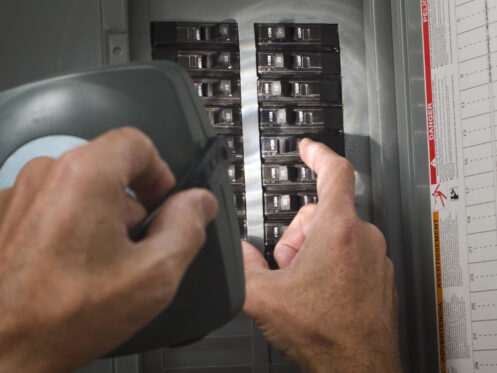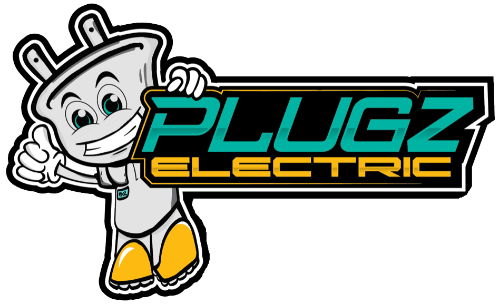Electrical panels and breaker boxes are essential components of electrical systems. Both of these components play a key role in ensuring the electrical system is safe and that the power gets distributed to where it needs to go. Here, we’ll explain exactly what electrical panels and breaker boxes do and help you understand the difference between the two.
An Overview of Electrical Panels and Breaker Boxes
The main electrical panel is the heart of any electrical system as it supplies power to the entire structure. Also known as a service panel, this is where the wire from the grid ties into the building. Each circuit in the structure is also wired into the panel. The only exception is if the building has one or more subpanels. In this case, a single wire runs from the main service panel to the subpanel and feeds all of the circuits tied to the subpanel.
A breaker box is obviously what houses all of the circuit breakers. Technically speaking, a breaker box is just part of an electrical panel. Newer electrical panels typically have two sides or compartments. One side is where the breakers are located, and the other side is where the wiring for each circuit ties to the panel. In some cases, this second side is also where the electric meter is located.
The breaker box side of the panel normally has an access door that you can open. This is whenever you need to reset a tripped breaker or switch off the main breaker to shut off the power to the building. The door on the service side of the panel should only ever be opened by a licensed electrician. This is because it is where all of the live wires are located along with the main wire that feeds the panel.
The Role of Circuit Breakers in Electrical Safety
Circuit breakers are one of the primary safety mechanisms in a modern electrical system. The purpose of a circuit breaker is to instantly shut off the power to the circuit if it ever gets overloaded. An overload is when the wattage of the electricity flowing through a circuit is higher than what the circuit is meant to supply. This can happen because of an issue like a short circuit that causes the power to spike. You can also easily overload a circuit by plugging in too many things and drawing too much wattage.
In the past, electrical systems used fuses instead of circuit breakers. One reason that we moved away from fuses is that circuit breakers are just more convenient. If the circuit a fuse controls gets overloaded, it causes the fuse to blow. That means you then need to replace the fuse to restore power to the circuit. A circuit breaker just trips to stop power from flowing when the circuit gets overloaded, and you then just need to switch the breaker back on to restore power.
The other reason circuit breakers are now the norm is that they are safer. Fuses can sometimes not blow when they should, which can easily result in an electrical fire. That’s one reason why you definitely need to upgrade your electrical panel if you still have a fuse box instead of a breaker box. The other reason is that an electrical panel with a fuse box is extremely outdated and very likely a safety hazard.
Circuit breakers are sensitive such that they should always trip as soon as an overload occurs. However, circuit breakers can wear out, which is one reason why it’s important to have a full electrical safety inspection performed regularly.
How to Know If You Need an Electrical Panel Upgrade
Even if your electrical panel has a breaker box, there’s a chance it may be time to upgrade to a new panel. One sure sign that it’s time to upgrade to a new electrical panel is if the existing panel is more than 25-30 years old. A panel that age is considered outdated and more likely to develop issues that could lead to a fire or other safety hazards.
Frequent electrical issues can also be a sign that the electrical panel isn’t in good condition or no longer works correctly. This is especially the case if you frequently have various circuit breakers trip.
Another thing to watch for is if lights in various rooms often flicker at certain times, such as when your AC comes on or you turn on your clothes dryer. This issue indicates that the panel isn’t large enough and can’t supply sufficient power to meet your needs. In this case, the solution is to install a panel that has a higher amperage. The National Electric Code (NEC) requires new homes to have a 100-amp or higher electrical service panel. However, most modern homes need at least a 150-amp electrical panel to meet their needs.
Contact Us Today
Plugz Electric is the company to count on when you need reliable electrical services in Forest Lake or the Twin Cities Metro area. We serve residential and commercial customers and can help if you need an electrical panel upgrade, an electrical inspection or any other installation or repair services. For more information, contact us today.



